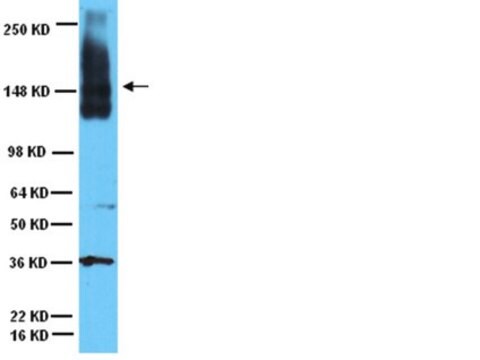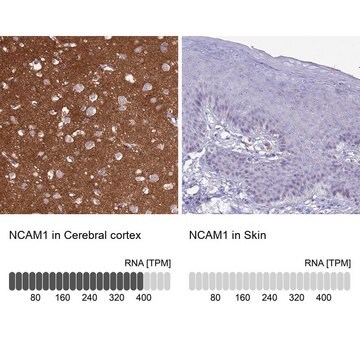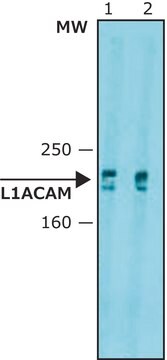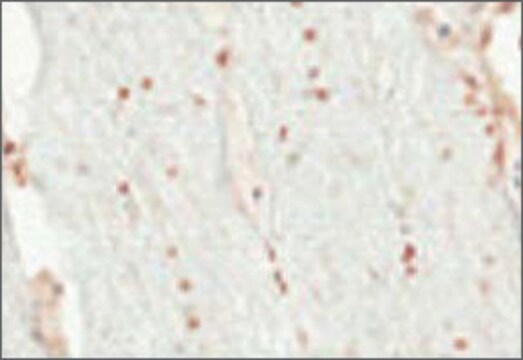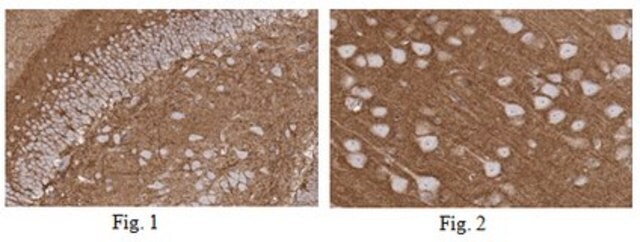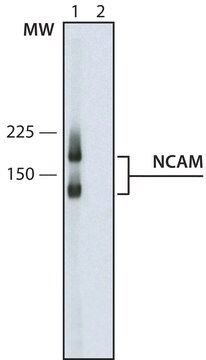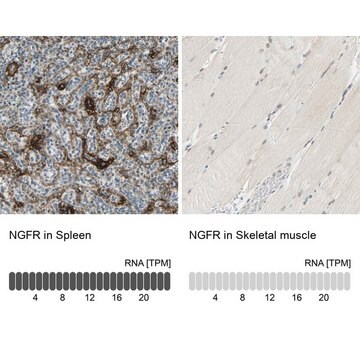MAB5272
Anti-Neural Cell Adhesion Molecule L1 Antibody, clone 324
clone 324, Chemicon®, from rat
Synonim(y):
CD171, N-CAM L1
About This Item
Polecane produkty
pochodzenie biologiczne
rat
Poziom jakości
forma przeciwciała
purified antibody
rodzaj przeciwciała
primary antibodies
klon
324, monoclonal
reaktywność gatunkowa
mouse, rat
producent / nazwa handlowa
Chemicon®
metody
immunocytochemistry: suitable
immunohistochemistry: suitable
western blot: suitable
izotyp
IgG
numer dostępu NCBI
numer dostępu UniProt
Warunki transportu
wet ice
docelowa modyfikacja potranslacyjna
unmodified
informacje o genach
human ... L1CAM(3897) , VCAM1(7412)
Opis ogólny
Specyficzność
Immunogen
Zastosowanie
20 μg/mL was used on a previous lot.
Immunocytochemistry:
5-10 μg/mL was used on a previous lot. Cells must be fixed with methanol for 10 minutes at -20°C in the middle log phase.
Immunohistochemistry: Clone 324 is sensitive to fixation. Fresh frozen, acetone or -20C methanol fixed tissues are recommended. Traditional 4% PFA typically does not work well. Other fixatives have not been tested.
Optimal working dilutions must be determined by end user.
Opis wartości docelowych
Postać fizyczna
Inne uwagi
Informacje prawne
Nie możesz znaleźć właściwego produktu?
Wypróbuj nasz Narzędzie selektora produktów.
Kod klasy składowania
10 - Combustible liquids
Klasa zagrożenia wodnego (WGK)
WGK 2
Certyfikaty analizy (CoA)
Poszukaj Certyfikaty analizy (CoA), wpisując numer partii/serii produktów. Numery serii i partii można znaleźć na etykiecie produktu po słowach „seria” lub „partia”.
Masz już ten produkt?
Dokumenty związane z niedawno zakupionymi produktami zostały zamieszczone w Bibliotece dokumentów.
Nasz zespół naukowców ma doświadczenie we wszystkich obszarach badań, w tym w naukach przyrodniczych, materiałoznawstwie, syntezie chemicznej, chromatografii, analityce i wielu innych dziedzinach.
Skontaktuj się z zespołem ds. pomocy technicznej